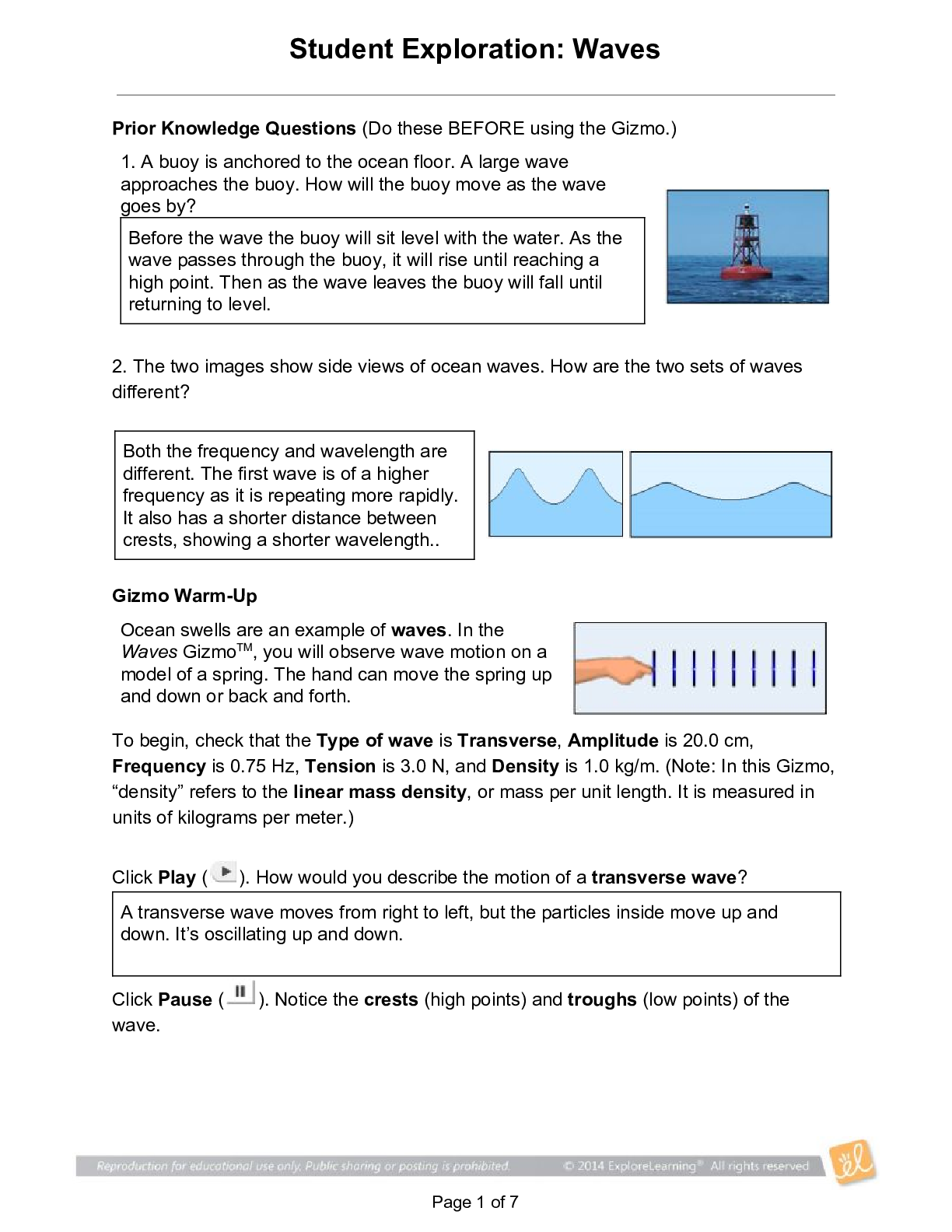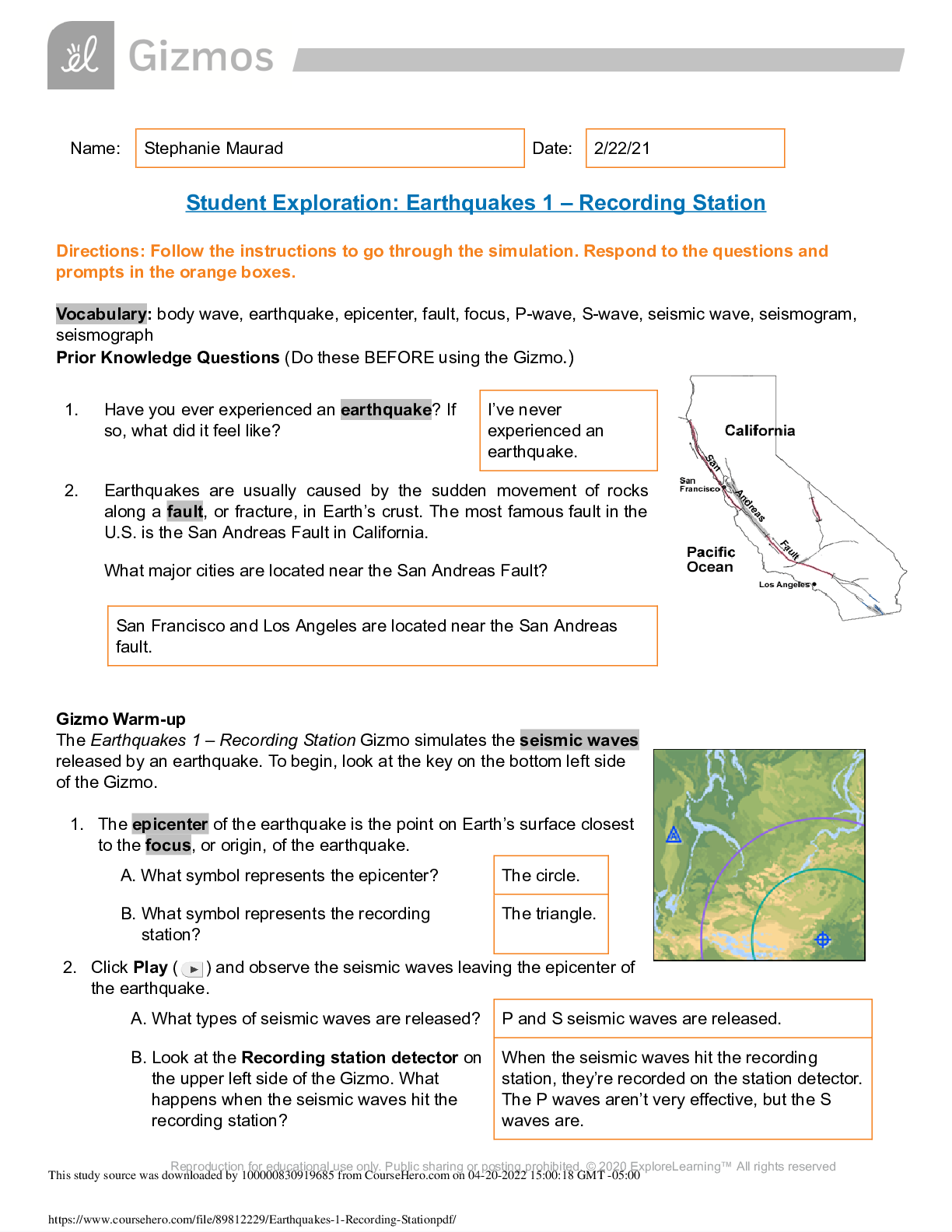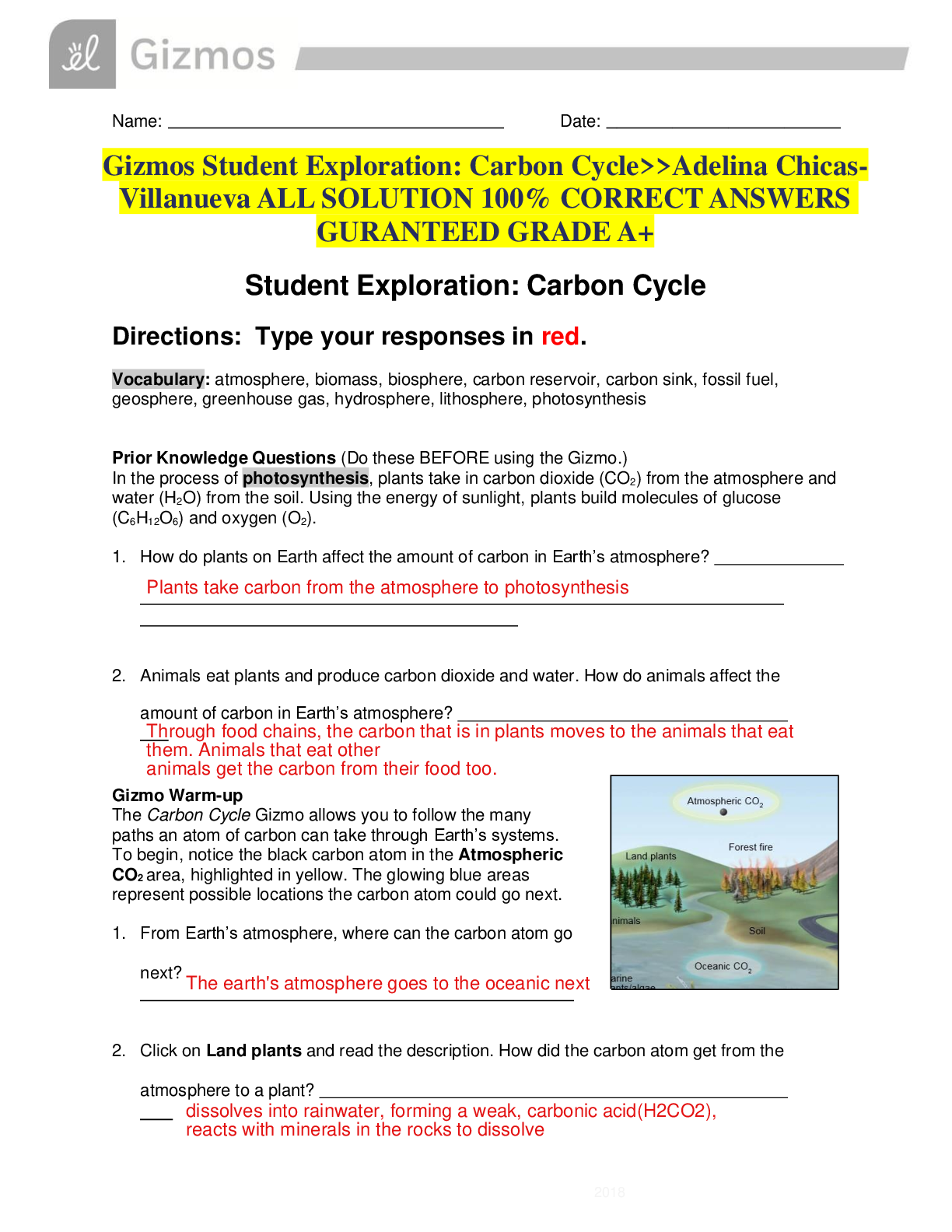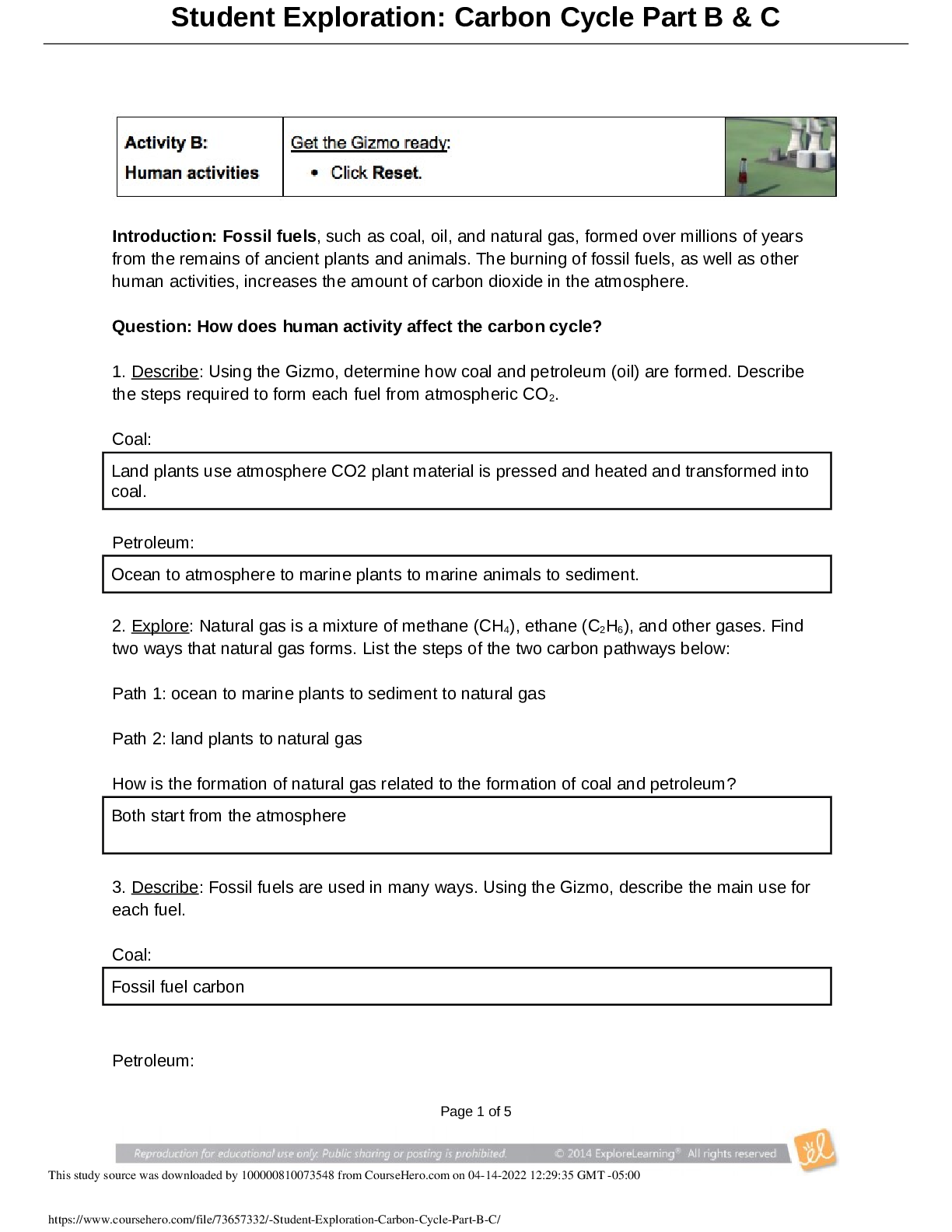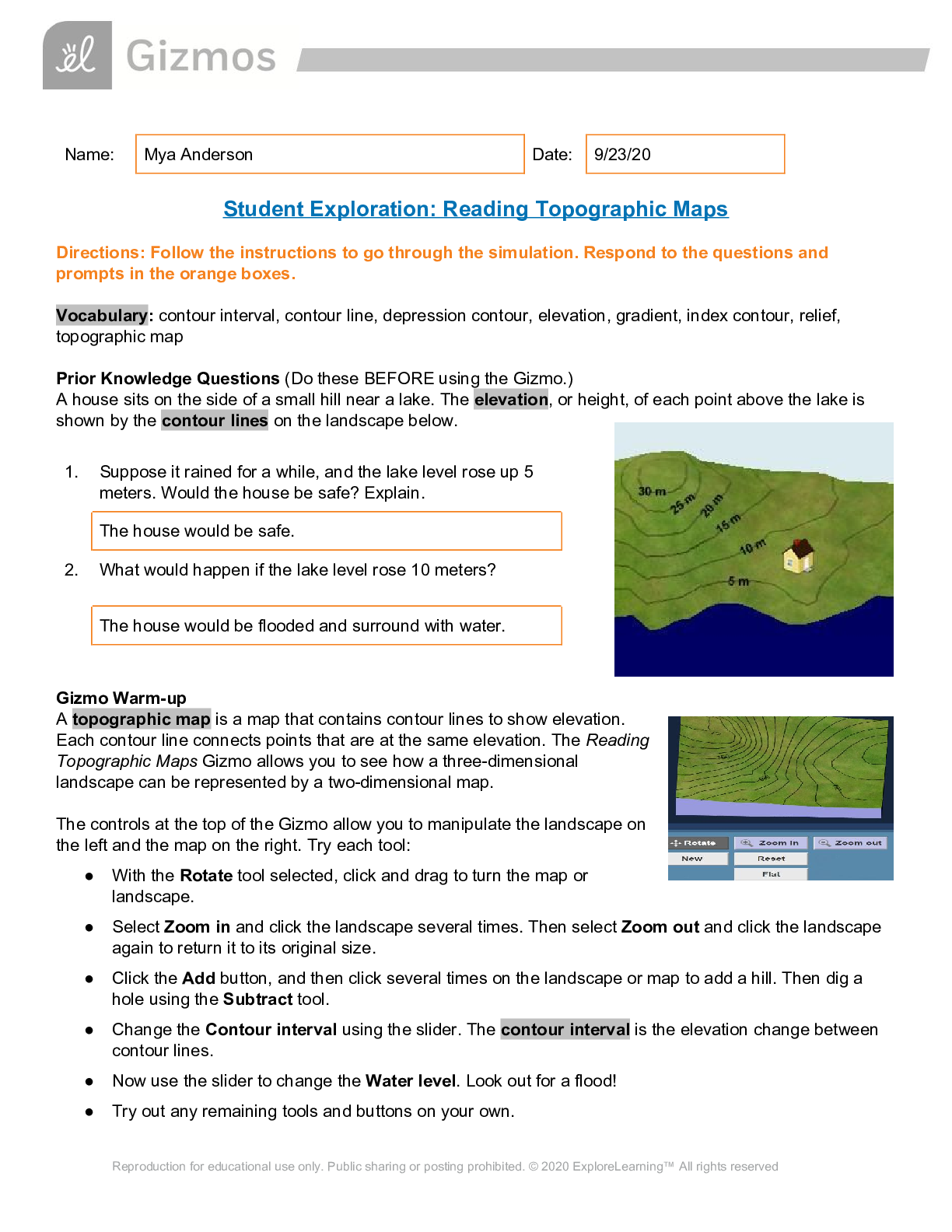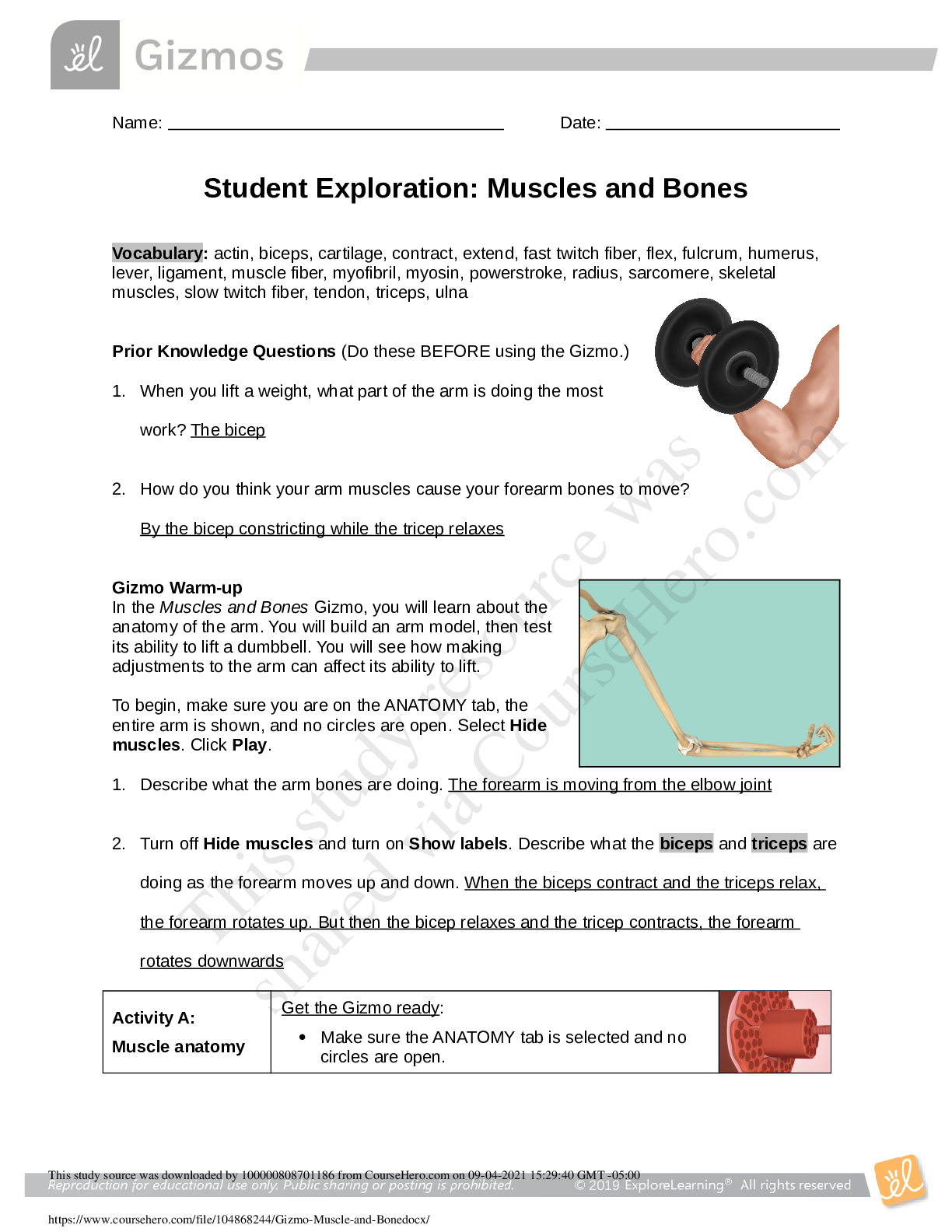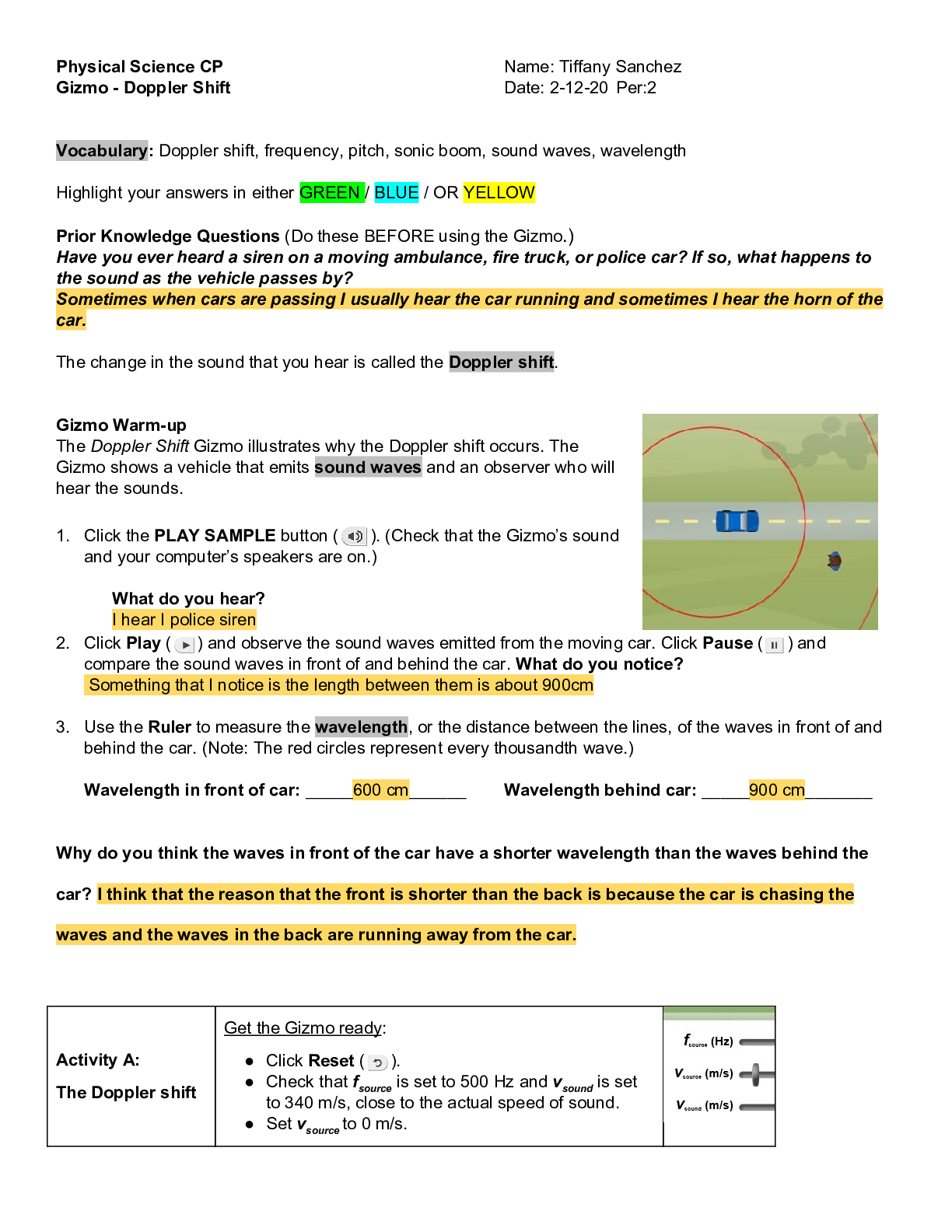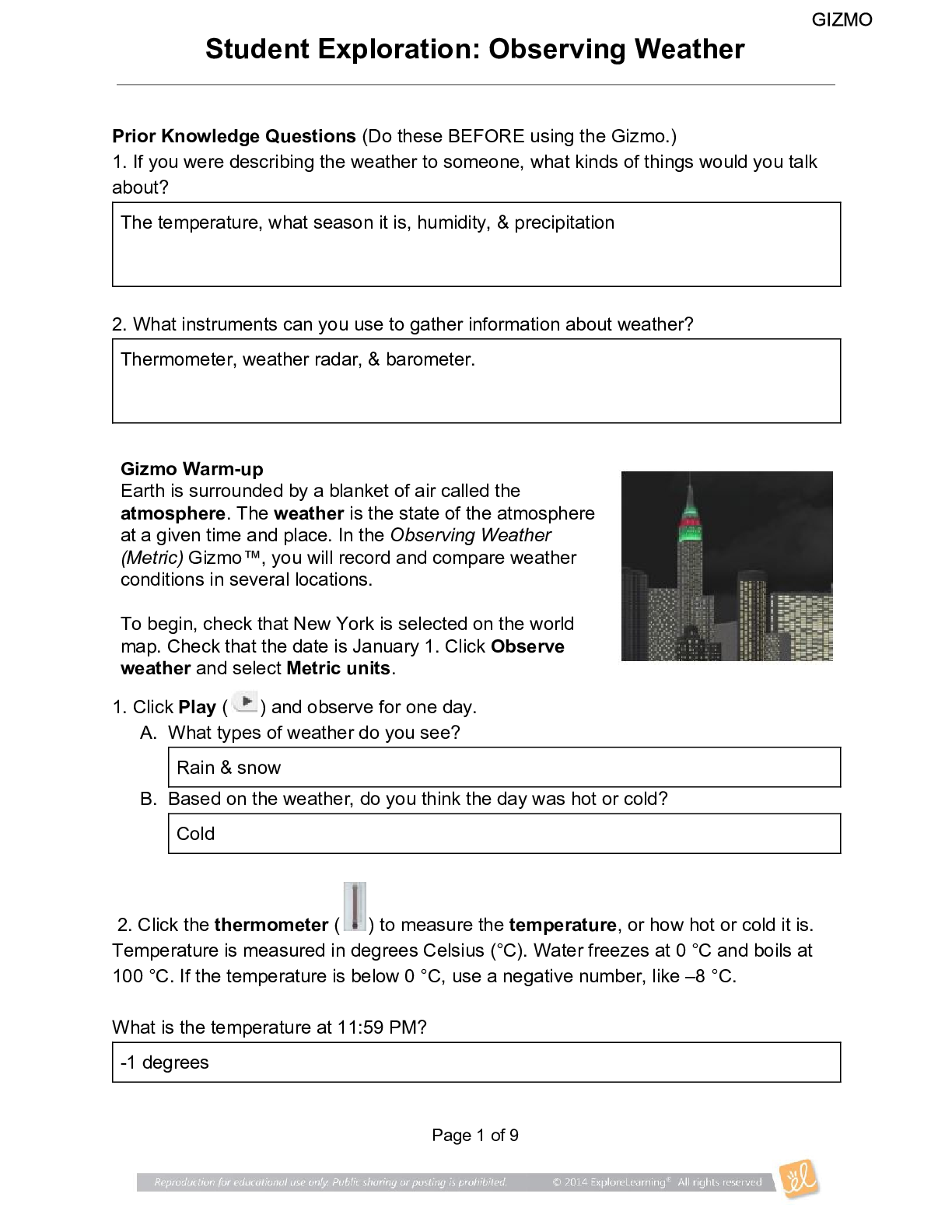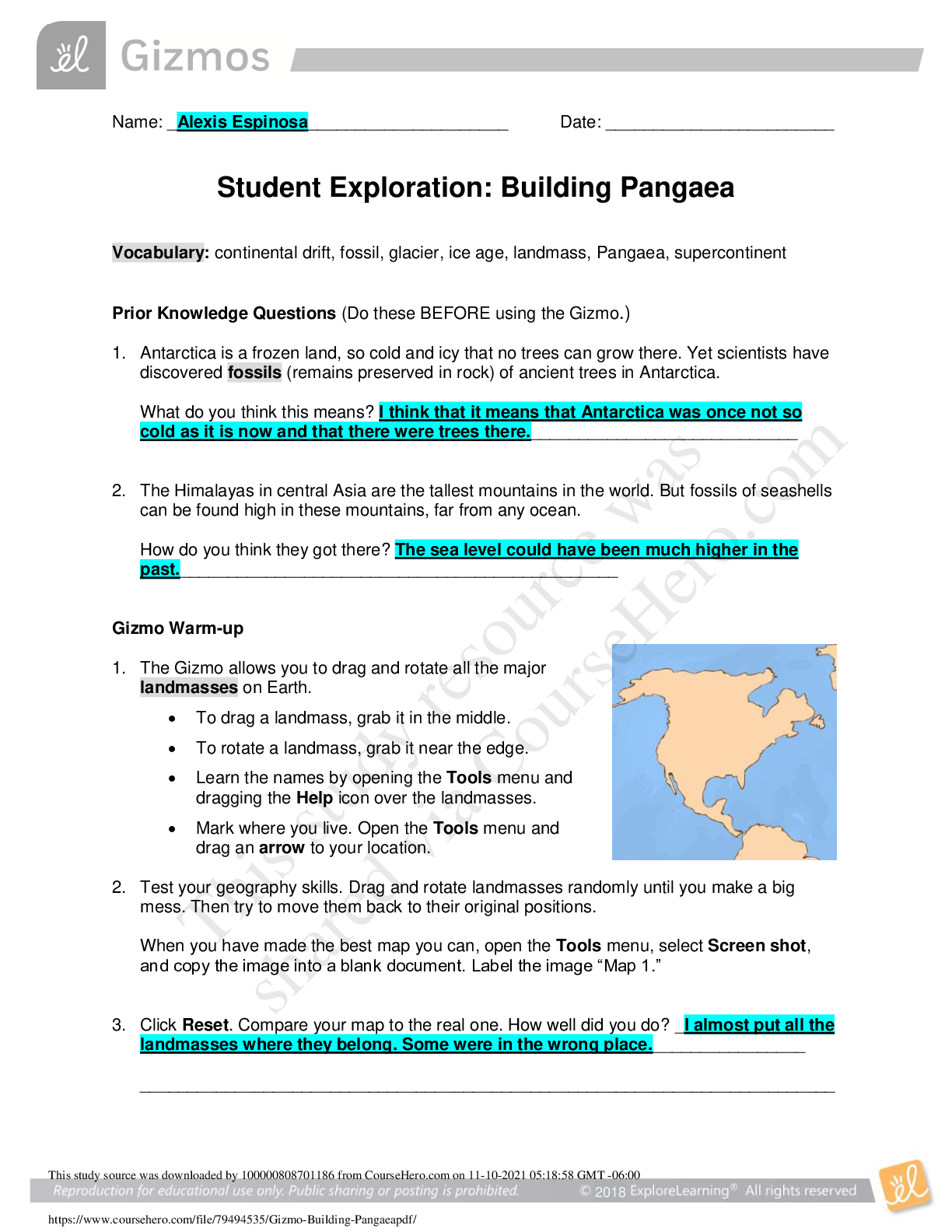SCIENCE 101 > GIZMOS > SCIENCE Earth. Student Exploration: Porosity. Questions and Answers (All)
SCIENCE Earth. Student Exploration: Porosity. Questions and Answers
Document Content and Description Below
Student Exploration: Porosity Vocabulary (refer to vocab file located on the Gizmo site for definitions): aquifer, gravel, permeability, porosity, sand, saturated, sediment, silt, surface water Aqu ... ifer – a saturated body of rock or sediment that is permeable enough to yield useful amounts of water in a spring or well. Gravel – loose sediment that consists mostly of grains that are larger than 2 mm in diameter. Permeability – the ability of a sediment or rock to transmit fluid. Porosity – the percentage of pore space in a volume of rock or sediment. o To calculate the porosity, divide the volume of pore space by the total volume of the sediment. o to calculate percentage porosity, multiply the porosity by 100. Sand – loose sediment that consists of grains between 0.0625 mm and 2 mm in diameter. o Sand grains commonly consist of quartz, calcite, or a mixture of minerals. o Sand grains are larger than silt particles but smaller than gravel. Saturated – filled with water. Sediment – solid materials that have been transported and then deposited. o There are three main categories of sediments: rock fragments, chemical precipitates, and organic remains. - Examples of rock fragments include gravel, sand, and silt. - Examples of chemical precipitates include calcium carbonate, calcium sulfate, and sodium chloride (salt). - Examples of organic remains include shell fragments, coral, skeletal remains, and plant remains. Silt – loose sediment that consists of grains between 0.0039 mm and 0.0625 mm in diameter. o Silt particles are larger than clay particles but smaller than sand grains. Surface water – water that is not absorbed into the ground (or other surface) and remains on top. Prior Knowledge Questions (Do these BEFORE using the Gizmo.) Two students are given cubic boxes, measuring 10 cm on a side. Robert puts a single glass marble with a diameter of 10 cm in the box. Susan puts 1,000 1-cm glass marbles in her box. 1. Whose box has more empty space? Explain. Roberts because the larger things take up more space than multiple small things would 2. Whose box will be heavier? Explain. Susan’s because she has less air in her box Gizmo Warm-up Some rocks and sediments have a lot of empty space in them. This allows liquids such as water and oil to pass This study source was downloaded by 100000810073548 from CourseHero.com on 04-14-2022 12:24:39 GMT -05:00 https://www.coursehero.com/file/30878265/Valenti-Eliana-94porositypdf/through and be stored in them. Permeability describes how easily liquid passes through a material, while porosity describes how much liquid can be stored in the material. These properties are explored in the Porosity Gizmo™. Turn on the Macroscopic view of Gravel, Sand, and Silt. Gravel consists mostly of rock fragments greater than 2.0 mm in diameter. Sand consists of grains that are between 0.0625 and 2.0 mm in diameter. Silt consists of grains that are between 0.0039 and 0.0625 mm in diameter. 1. Which sediment do you think will allow water to pass through most easily? gravel 2. Which sediment do you think could hold the most water? gravel 3. An aquifer is a rock layer that stores and allows the flow of groundwater. Compared to other types of rock layers, how permeable and porous would an aquifer be? Very permeable and porous Activity A: Permeability Get the Gizmo ready: • If necessary, click Reset below each container of sediment. Question: How does permeability relate to the grain size of sediment? 1. Observe: Above the gravel container, click ON. Observe water moving through the gravel. A. Does the water pass easily through the gravel? Yes B. Repeat the same procedure with the sand and silt. What do you notice? The water didn’t move through as easily 2. Gather data: Surface water pools on top of the sediments. Surface water can indicate that sediments are saturated (full of water) or that the sediments are not very permeable. Click Reset below each container. Release about 100 mL of water into the gravel beaker, and press OFF. Record the approximate amount of surface water you see just after you press OFF. Repeat the same procedure for the sand and silt. Gravel: 0.0ml Sand: 37ml Silt: 75ml [Show More]
Last updated: 3 years ago
Preview 1 out of 4 pages
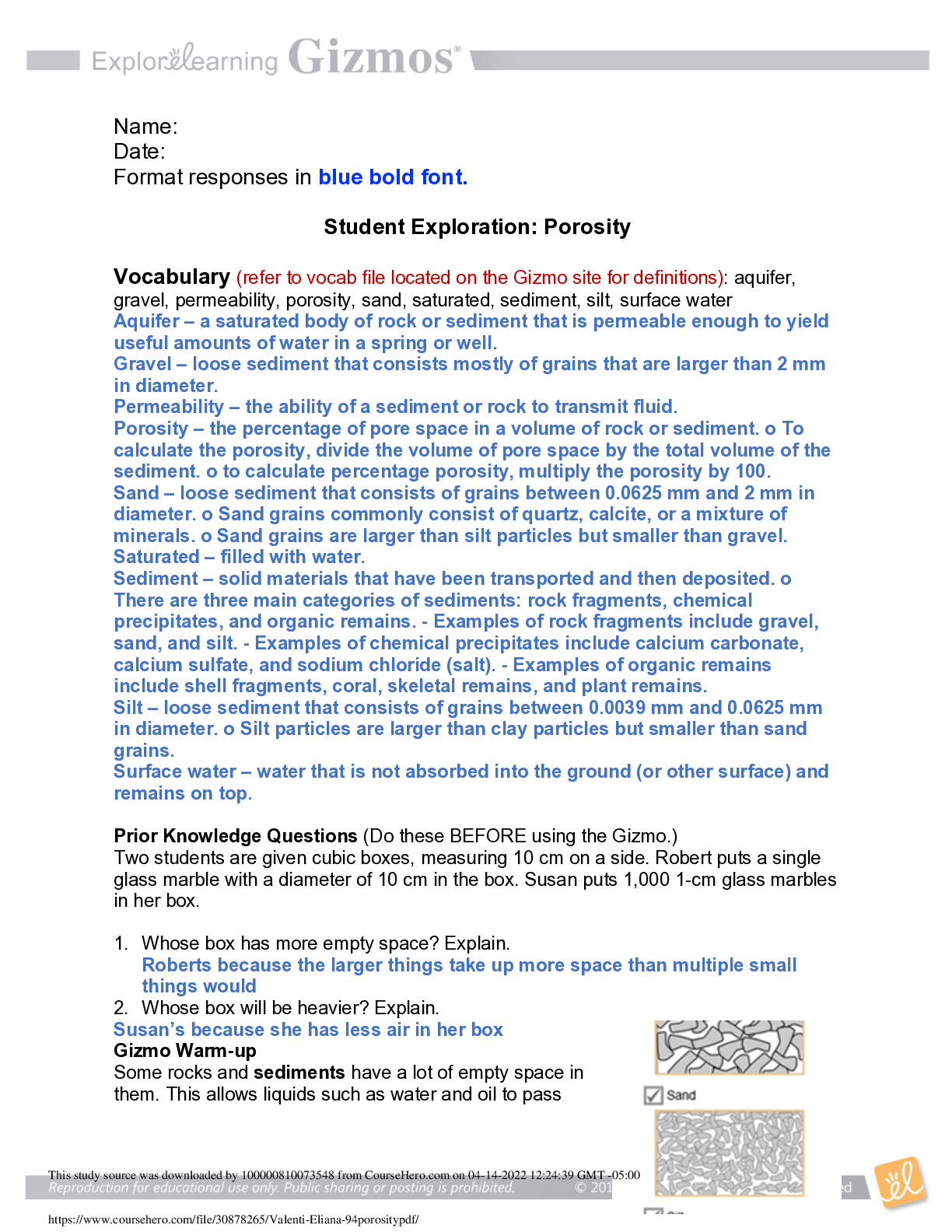
Buy this document to get the full access instantly
Instant Download Access after purchase
Buy NowInstant download
We Accept:

Reviews( 0 )
$8.00
Can't find what you want? Try our AI powered Search
Document information
Connected school, study & course
About the document
Uploaded On
Apr 14, 2022
Number of pages
4
Written in
All
Additional information
This document has been written for:
Uploaded
Apr 14, 2022
Downloads
0
Views
465

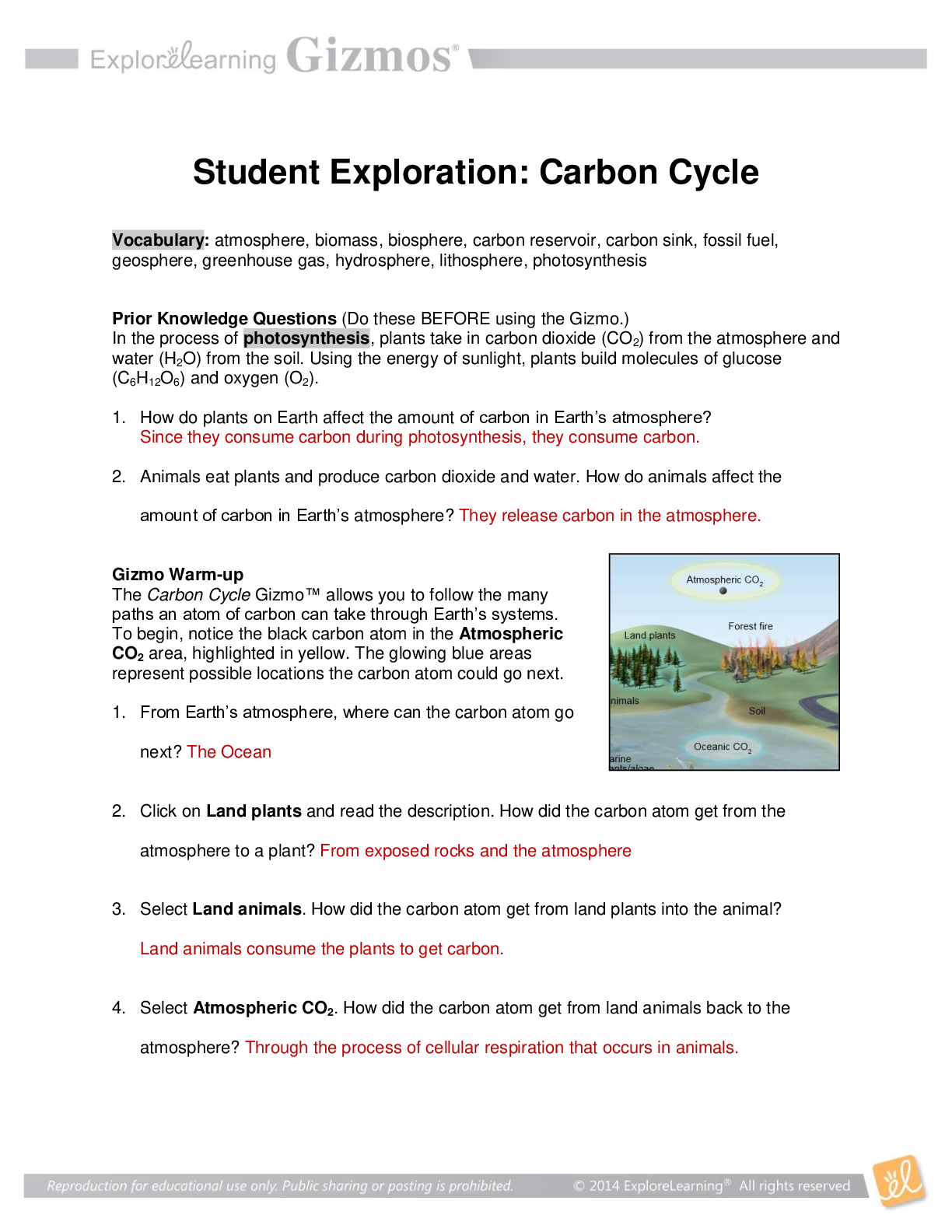
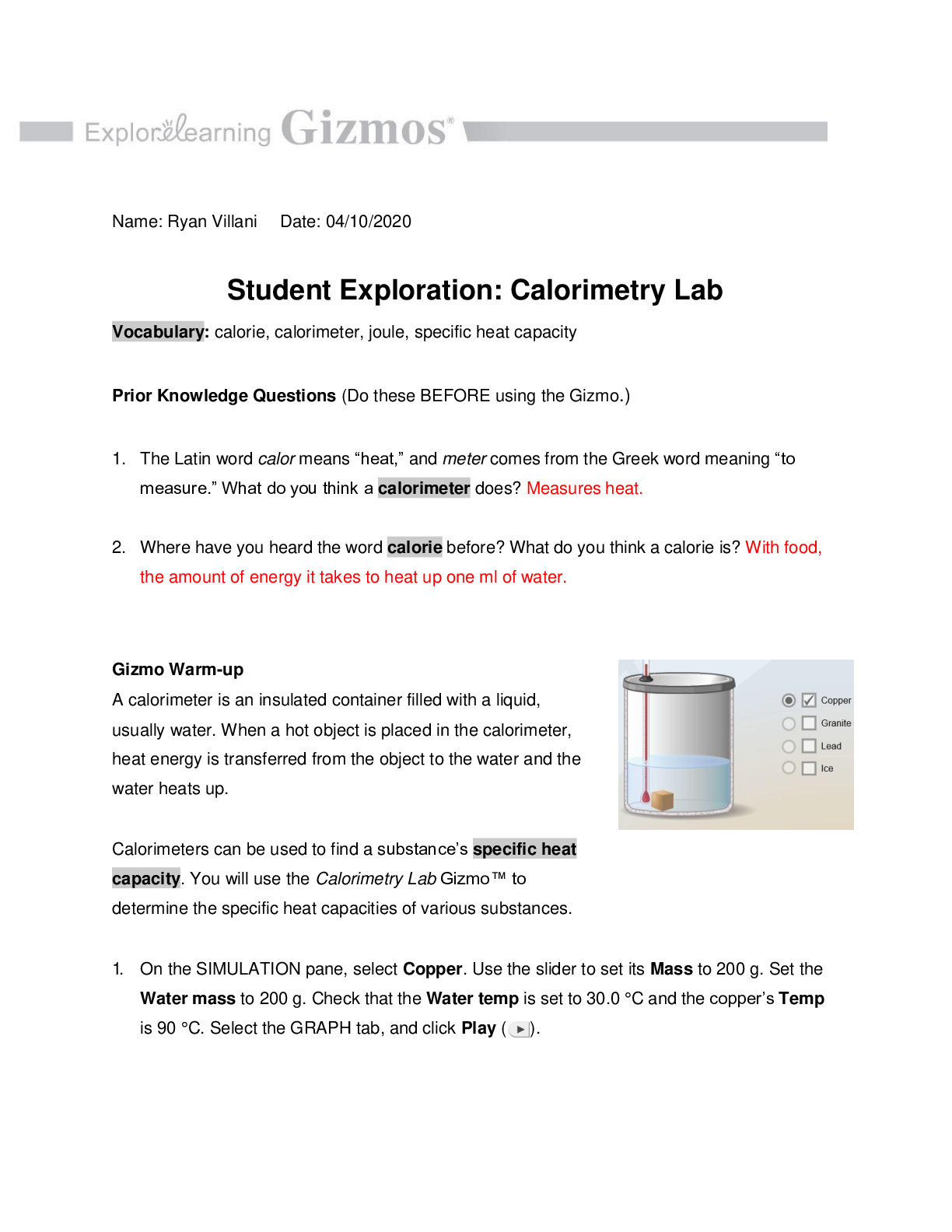
.png)
.png)

